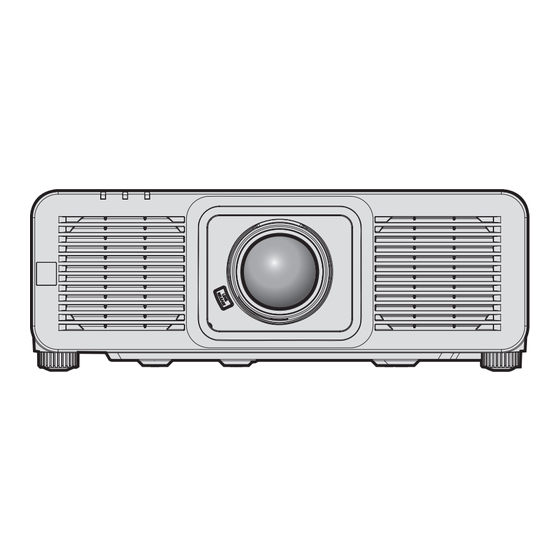Table of Contents
Advertisement
Quick Links
Thank you for purchasing this Panasonic product.
■ This manual is common to all the models regardless of suffixes of the Model No.
z for USA, Canada, Mexico, Brazil
LW: White model
z for EU, EFTA, UK, Turkey
LWEJ: White model
z for Korea, Taiwan
LB: Black model
z for India
LBD: Black model
z for other countries or regions
LWE: White model
■ Before operating this product, please read the instructions carefully and save this manual
for future use.
■ Before using this product, be sure to read "Read this first!" ( x pages 5 to 17).
Operating Instructions
DLP™ Projector
The projection lens is sold separately.
LB: Black model
LBEJ: Black model
LBE: Black model
Functional Manual
Commercial Use
PT-RQ7
Model No.
PT-RQ6
PT-RZ7
PT-RZ6
* PT‑RQ7 / PT‑RQ6 only
Resolution is 3 840 x 2 160 dots
(QUAD PIXEL DRIVE: ON)
ENGLISH
DPQP1574ZA/X1
Advertisement
Table of Contents















Need help?
Do you have a question about the PT-RQ7 Series and is the answer not in the manual?
Questions and answers